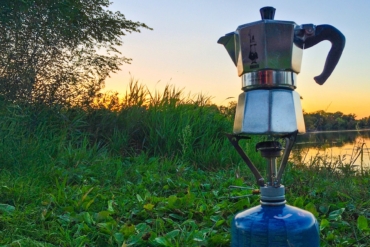Rock climbing is booming right now, and why not? It’s great exercise, fun, and social. Here’s the beginner rock climbing gear you need to get started.
Climbing is going up, in all directions. In recent years, untold numbers of outdoorspeople and urban folks have picked up the sport, with 34 climbing gyms opening across the U.S. last year alone and participation increasing indoors and at the crags.
This article covers gear for top-roping and sport climbing routes for beginners tagging along with more experienced climbers. We spoke with John McDonough, a climber with more than 20 years under his harness, for tips on the gear you need to get going.
Note: This list does not include crucial safety or skills information; please seek professional instruction before heading outdoors to climb.
Rock Climbing Gear: The 5 Essentials

1. Harness
Your tie-in point and on-person gear organizing area, a harness is among the first piece of equipment you will buy. More than a dozen major brands make harnesses, and they range in price from about $40 to more than $200.
Fit is the most important aspect of a harness, and each brand has different sizing. If you fall between sizes from one company, try a different brand.
- For beginner sport climbers, go with a more affordable harness. Get a basic model made for rock climbing.
- Purchase a harness with adjustable leg loops so you can use it in the winter and summer (harnesses with fixed leg loops don’t fit easily over winter pants).
- For top-roping, a simple harness is fine. Once you begin lead climbing, gear loops become important to rack pro and anchor-building gear, like quickdraws, cord, and carabiners.
2. Helmet

Falling rock is a real concern in the sport, as is hitting your head against the cliffside in a fall. Helmets are highly recommended (we say mandatory) equipment for anyone climbing outdoors.
- A helmet should fit comfortably and you should feel like you look good wearing it (so that you actually wear the helmet out there).
- A traditional “hardshell” helmet (aka suspension helmet; pictured) will last longer and take abuse, but they are often less comfortable than the lighter-weight, foam-based styles.
- Safety testing of helmets includes the CE (European Committee for Standardization) and the UIAA (International Climbing and Mountaineering Federation). Be sure your hard hat is certified.
- Tip: Some women’s-specific helmets are ponytail-compatible!
- Budget about $55 to $100 for a helmet. See a range of helmet options here.
3. Shoes

Sticky rubber and a tight fit are what allow climbing shoes to step and find purchase on minuscule holds or jams in cracks. Spend the effort to find shoes that fit you right (and snug!) and you’ll gain an immediate boost in ability on the wall.
- Velcro closures, slip-on styles, and tie shoes are options. For beginner and intermediate climbers, we recommend lace-up shoes with a moderate or relaxed fit. They should be close-fitting but not overly painful.
- Aggressive shoes (see examples on REI here) are made for advanced climbers on advanced routes. Wait until you have more experience before stepping into aggressive shoes.
- Sizing is different across brands, so try on a few pairs.
4. Belay Device & Locking Carabiner

Attached to your harness with a locking carabiner, a belay device is used to control the rope. This includes while belaying a climber as well as for rappels off the top of the climb. There are many options and styles (see a full spread of choices here), but all accomplish the same task of keeping the rope — and the climber connected to it — safe and in control.
- For your first belay device, many climbers choose a Black Diamond ATC. It’s affordable at less than $20, and it’s simple to use. Learn the technique of belaying with this “tube-style” device as a bedrock skill.
- Those belay skills will translate to using other devices, such as the popular Petzl GRIGRI, which gives assisted braking (but is not as easily used for rappelling).
- You’ll need a locking carabiner to attach your belay device. There are dozens of models available. Choose one with an easy-to-use locking mechanism and wide gate opening. The Petzl Attache 3D Screw-Lock is a popular option.
5. Chalk

Chalk dries your hands to help keep them from slipping off the holds. Each climber is different; some don’t get sweaty hands and don’t chalk up often, and others are copious users.
- There are many brands of chalk, some with big promises on superior grip. For beginner and intermediate climbers, any chalk type works; it’s a personal preference.
- Look at chalk regulations at each climbing area. Some locales only allow certain colors or don’t allow chalk at all — like Garden of the Gods or Arches National Park, which allow only red chalk.
- Get a chalk bag to hold your white dust. They come in all kinds of styles, from utilitarian $12 models to ones with quirky, bold themes.
For the beginner, these five items above provide a manageable, basic kit so you can hop in and start climbing with more experienced crag rats. Now, just get your gear and get started. There’s a big world of vertical stone out there waiting to be climbed.








